Beethoven Symphony No 9 in D minor, Op. 125 (with piano sheet music arrangements in our Library)

Beethoven’s Symphony No. 9
Symphony No. 9 in D Minor, Op. 125, byname the Choral Symphony, orchestral work in four movements by Ludwig van Beethoven, remarkable in its day not only for its grandness of scale but especially for its final movement, which includes a full chorus and vocal soloists who sing a setting of Friedrich Schiller’s poem “An die Freude” (“Ode to Joy”). The work was Beethoven’s final complete symphony, and it represents an important stylistic bridge between the Classical and Romantic periods of Western music history. Symphony No. 9 premiered on May 7, 1824, in Vienna, to an overwhelmingly enthusiastic audience, and it is widely viewed as Beethoven’s greatest composition.
Beethoven’s Symphony No. 9 was ultimately more than three decades in the making. Schiller’s popular “Ode to Joy” was published in 1785, and it is possible that Beethoven made his first of multiple attempts to set it to music in the early 1790s. He clearly revisited the poem in 1808 and 1811, as his notebooks include numerous remarks regarding possible settings. In 1812 Beethoven determined to place his setting of “Ode to Joy” within a grand symphony.
Ten more years passed before that symphony’s completion, and during that time Beethoven agonized over the composition’s every note. His notebooks indicate that he considered and rejected more than 200 different versions of the “Ode to Joy” theme alone. When he finally finished the work, he offered to the public a radically new creation that was part symphony and part oratorio—a hybrid that proved puzzling to less-adventuresome listeners. Some knowledgeable contemporaries declared that Beethoven had no understanding of how to write for voices; others wondered why there were voices in a symphony at all.
The story of the premiere of Symphony No. 9 is widely told and disputed. Beethoven had steadily lost his hearing during the course of the symphony’s composition, and by the time of its premiere he was profoundly deaf. Although he appeared onstage as the general director of the performance, kapellmeister Michael Umlauf actually led the orchestra with the conductor’s baton, taking tempo cues from Beethoven.
According to one account of the event, the audience applauded thunderously at the conclusion of the performance, but Beethoven, unable to hear the response, continued to face the chorus and orchestra; a singer finally turned him around so that he could see evidence of the affirmation that resounded throughout the hall. Other accounts maintain that the dramatic incident occurred at the end of the second movement scherzo. (At the time, it was common for audiences to applaud between movements.) Whenever the applause occurred, that it passed unnoticed by Beethoven makes clear that he never heard a note of his magnificent composition outside his own imagination.
Symphony No. 9 broke many patterns of the Classical style of Western music to foreshadow the monolithic works of Gustav Mahler, Richard Wagner, and other composers of the later Romantic era. Its orchestra was unusually large, and its length—more than an hour—was extraordinary. The inclusion of a chorus, moreover, in a genre that was understood to be exclusively instrumental, was thoroughly unorthodox.
The formal structure of the movements, while generally adhering to Classical models, also charted new territory. For example, the first movement, although in Classical sonata form, confounds listeners first by rising to a fortissimo climax in the harmonically unstable exposition section and then by delaying a return to the home key. The scherzo, with all its propulsive energy, is placed as the second movement, rather than the customary third, and the third movement is a mostly restful, almost prayerful adagio. The last movement builds from a gentle beginning into a brazen finale, while recalling some themes from earlier movements; once the “Ode to Joy” theme arrives, the musical form essentially becomes that of variations within a broader sonata-form structure.
Despite some sharp initial critique of the work, Symphony No. 9 has withstood the test of time and, indeed, has made its mark. In the world of popular culture, the symphony’s menacing second movement in brisk waltz time provided a backdrop for some of the most tense and twisted moments in Stanley Kubrick’s 1971 film adaptation of Anthony Burgess’s psycho-thriller novel A Clockwork Orange (1962).
The choral fourth movement accompanies a triumphant soccer (football) scene in Peter Weir’s film Dead Poets Society (1989). In the realm of technology, the audio capacity of the compact disc was set at 74 minutes in the early 1980s, purportedly to accommodate a complete recording of Beethoven’s Symphony No. 9.
Symphony No. 9 has also been used to mark monumental public events, among the most moving of which took place on Christmas Day 1989 in Berlin. There, in the first concert since the demolition of the Berlin Wall just a few weeks earlier, American conductor Leonard Bernstein led a group of musicians from both the eastern and western sides of the city in a performance of Beethoven’s Symphony No. 9 with a small but significant alteration: in the “Ode to Joy” the word Freude was replaced with Freiheit (“freedom”).
A performance of the choral finale of the symphony—with simultaneous global participation via satellite—brought the opening ceremony of the 1998 Winter Olympics in Nagano, Japan, to a powerful close.
Browse in the Library:
| Artist or Composer / Score name | Cover | List of Contents |
|---|---|---|
| Astor Piazzola Oblivion Guitar Arr. By Nadja Kossinskaja |
 |
Piazzola Oblivion Guitar arr. by Nadja Kossinskaja page 1-1 |
| Astor Piazzolla 12 Tangos Piano |
 |
|
| Astor Piazzolla 6 Tangos |
 |
Astor Piazzolla 6 Tangos |
| Astor Piazzolla Angel (Complete) For Piano (Different Version) |
 |
Astor Piazzolla Angel (Complete) For Piano (Different Version) |
| Astor Piazzolla Ave Maria (Piano) |
 |
|
| Astor Piazzolla Balada Para Un Loco (Cacho Tirao) Guitar |
 |
|
| Astor Piazzolla Maria De Buenos Aires, Opera Tango (Partitura completa) |
 |
|
| Astor Piazzolla Milonga Del Angel (Piano Solo) Arranged By Prof. John Mortensen Slow Tango |
 |
|
| Astor Piazzolla Milonga Del Angel (Piano Solo) Original |
 |
|
| Astor Piazzolla sheet music Le Grand Tango Score For Viola And Piano |
 |
|
| Astor Piazzolla Vuelvo al sur (piano) |
 |
|
| Astor Piazzolla – 5 piezas para guitarra (guitar sheet music) | Astor Piazzolla – 5 piezas para guitarra (guitar sheet music) | |
| Astor Piazzolla – Picasso (Tango) Piano |
 |
|
| Astor Piazzolla 4 Estaciones Porteñas Guitar arr. |
 |
|
| Astor Piazzolla Nightclub 1960 Duo Flute Guitar |
 |
|
| Astor Piazzolla – Adios Nonino (Two Pianos) | Astor Piazzolla – Adios Nonino (Two Pianos) | |
| Astor Piazzolla – Adiós Nonino (guitar sheet music) |
 |
|
| Astor Piazzolla – Adios Nonino Piano Solo |
 |
|
| Astor Piazzolla – Album No. 1 |
 |
Astor Piazzolla album no 1 |
| Astor Piazzolla – Album No. 2 |
 |
Astor Piazzolla – Album No. 2 |
| Astor Piazzolla – Album No. 4 |
 |
Astor Piazzolla – Album No. 4 |
| Astor Piazzolla – Buenos Aires Hora Cero | Astor Piazzolla – Buenos Aires Hora Cero | |
| Astor Piazzolla – Chau Paris (piano) | Astor Piazzolla – Chau Paris (piano) | |
| Astor Piazzolla – Complete Works – Obras Para Piano Y Varios Instrumentos (partituras, sheet music) | Astor Piazzolla – Complete Works – Obras Para Piano Y Varios Instrumentos (partituras, sheet music) | |
| Astor Piazzolla – Contrastes (Piano) | Astor Piazzolla – Contrastes (Piano) | |
| Astor Piazzolla – Coral (Piano) | Astor Piazzolla – Coral (Piano) | |
| Astor Piazzolla – Estaciones Porteñas for piano – für Klavier |
 |
Astor Piazzolla – Estaciones Portenas fur Klavier |
| Astor Piazzolla – Fuga 9 (Piano) | Astor Piazzolla – Fuga 9 (Piano) | |
| Astor Piazzolla – Invierno Porteno (guitar sheet music) |
 |
|
| Astor Piazzolla – Invierno porteño [clarinet-piano] |
 |
|
| Astor Piazzolla – La Muerte Del Angel (Guitar arr. sheet music) |
 |
|
| Astor Piazzolla – Libertango (Part A – Guitar Arr.) (Musescore File).mscz | ||
| Astor Piazzolla – Libertango for 2 pianos | Astor Piazzolla – Libertango 2KL | |
| Astor Piazzolla – Los pajaros perdidos (canción) piano vocal |
 |
|
| Astor Piazzolla – Milonga Del Angel (guitar arr. sheet music) |
 |
|
| Astor Piazzolla – Milonga del angel (Piano solo) |
 |
Astor Piazzolla – Milonga del angel |
| Astor Piazzolla – Oblivion (piano solo ver.) | Astor Piazzolla – Oblivion (piano solo sheet music) | |
| Astor Piazzolla – Oblivion (piano solo) |
 |
|
| Astor Piazzolla – Oblivion arr. by Najda Kssinskaja (Guitar arr. sheet music with TABs) | Astor Piazzolla – Oblivion arr. by Najda Kssinskaja (Guitar arr. sheet music with TABs) | |
| Astor Piazzolla – Oblivion Cello & piano | Piazzolla Oblivion cello piano arr. | |
| Astor Piazzolla – Oblivion for Piano solo sheet music (partitura) |
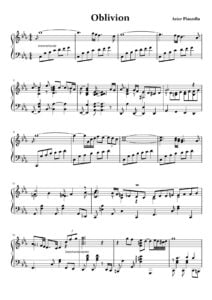 |
|
| Astor Piazzolla – Onda Nueve (Tango) Piano | Astor Piazzolla – Onda Nueve (Tango) Piano | |
| Astor Piazzolla – Otoño Porteño (guitar sheet music) | Astor Piazzolla – Otoño Porteño (guitar sheet music) | |
| Astor Piazzolla – Piano SongBook (Angel, Libertango, 6 Tangos, Estaciones Porteñas) |
 |
|
| Astor Piazzolla – Preludio 9 (Piano) | Astor Piazzolla – Preludio 9 (Piano) | |
| Astor Piazzolla – Río Sena (Tango) Piano | Astor Piazzolla – Río Sena (Tango) Piano | |
| Astor Piazzolla – Romanza del Duende (Piano) | Astor Piazzolla – Romanza del Duende (Piano) | |
| Astor Piazzolla – sheet music – Suite del Angel (Piano) |
 |
|
| Astor Piazzolla – Soledad (Solitude) Full score sheet music | Astor Piazzolla – Soledad (Solitude) Full score sheet music (first page) | |
| Astor Piazzolla – Suite Troileana 2 guitars (Bandoneon, Zita, Whisky, Escolaso) |
 |
|
| Astor Piazzolla – Suite Troileana 2 guitars arr. Sergio Assad (Bandoneon, Zita, Whisky, Escolaso) |
 |
|
| Astor Piazzolla – Suite Troileana arr for Piano (Bandoneon, Zita, Whisky, Escolaso) |
 |
|
| Astor Piazzolla – Tangos for 2 Pianos |
 |
Astor Piazzolla – Tangos for 2 Pianos |
| Astor Piazzolla – Tangus Dei (Piano) |
 |
|
| Astor Piazzolla – The Last Tango Music Of Guitar arr. |
 |
|
| Astor Piazzolla – Tristango (Piano) | Astor Piazzolla – Tristango (Piano) | |
| Astor Piazzolla – Vuelvo Al Sur (10 tangos and other pieces arr. piano) |
 |
Astor Piazzolla – Vuelvo Al Sur |
| Astor Piazzolla -Four, For Tango – Score |
 |
|
| Astor Piazzolla (Spanish Español Ed. 2018 El Ateneo 2020) (María Susana Azzi) Biography Book |
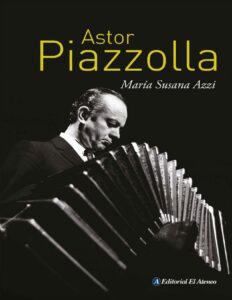 |
|
| Astor Piazzolla (Tango) Balada Para Un Loco – Guitar (letra Horacio Ferrer) |
 |
|
| Astor Piazzolla 100 Años Edicion Aniversario Sus mejores obras para piano |
 |
Astor Piazzolla 100 Años Edicion Aniversario Sus mejore obras para piano |
| Astor Piazzolla 25 Tangos for Clarinet and piano Clarinet Part in Bb |
 |
Astor Piazzolla 25 Tangos for Clarinet and piano Clarinet Part in Bb |
| Astor Piazzolla 28 tangos arranged For Piano |
 |
Astor Piazzolla 28 tangos arranged For Piano |
| Astor Piazzolla Album 20 compositions arr. for Piano |
 |
Piazzolla album |
| Astor Piazzolla Ave Maria (Piano and voice) |
 |
|
| Astor Piazzolla Cinco Piezas For Guitar |
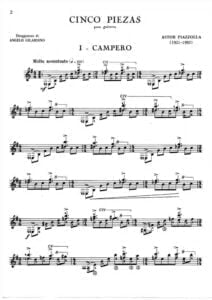 |
|
| Astor Piazzolla Color de Buenos Aires Suite letra Horacio Ferrer |
 |
|
| Astor Piazzolla Contrabajeando Double Bass And Piano Contrabajo Y Piano |
 |
|
| Astor Piazzolla Extasis Piano (Tango) |
 |
|
| Astor Piazzolla Flute or Violin Piano Collection |
 |
|
| Astor Piazzolla For Violin And Guitar (Astor Piazzolla) |
 |
Astor Piazzolla For Violin And Guitar (Astor Piazzolla)_compressed |
| Astor Piazzolla Guitar compositions Collection (Guitarra) sheet music, partituras | Astor Piazzolla Guitar compositions (Guitarra) sheet music, partituras | |
| Astor Piazzolla Horacio Ferrer Chiquilin De Bachin Piano vocal |
 |
|
| Astor Piazzolla La Muerte Del Angel Trio Violin Cello Piano Score |
 |
|
| Astor Piazzolla Le Grand Tango – Two Pianos | Astor Piazzolla Le Gran Tango – Two Pianos | |
| Astor Piazzolla Libertango (Guitar Solo Arr.) With Tab |
 |
|
| Astor Piazzolla Milonga Del Àngel (For Chamber Orchestra) Tangos |
 |
|
| Astor Piazzolla Oblivion (piano solo) |
 |
|
| Astor Piazzolla Oblivion arr. for 2 violins |
 |
|
| Astor Piazzolla Oblivion for Violin or Flute Cello Piano | Astor Piazzolla Oblivion for Violin or Flute Cello Piano | |
| Astor Piazzolla Oblivion Trans Solo Piano | Astor Piazzolla Oblivion Trans Solo Piano sheet music pdf | |
| Astor Piazzolla Oblivion Violin Guitar |
 |
|
| Astor Piazzolla Obras Completas Guitarra For Guitar |
 |
Astor Piazzolla Obras Completas For Guitar |
| Astor Piazzolla Piano Collection |
 |
Astor Piazzolla Piano Collection |
| Astor Piazzolla Piano Meditango |
 |
|
| Astor Piazzolla Romance Del Diablo Flauta Violin and Piano |
 |
|
| Astor Piazzolla Sensuel Piano |
 |
|
| Astor Piazzolla Tangazo for Orchestra Variaciones sobre Buenos Aires para orquestra |
 |
|
| Astor Piazzolla Tango Etudes (for flute or Violin) | Astor Piazzolla Tango Etudes (for flute or Violin) | |
| Astor Piazzolla Tango S V P For Violin Ensemble Solo | Astor Piazzolla Tango S V P For Violin Ensemble Solo | |
| Astor Piazzolla Tangos Arr Phillip Keveren The Phillip Keveren Series Piano Solo |
 |
Astor Piazzolla Tangos Arr Phillip Keveren The Phillip Keveren Series Piano Solo |
| Astor Piazzolla Tanti Anni Prima Ave Maria For Piano solo |
 |
|
| Astor Piazzolla Tanti Anni Prima Ave Maria Violin and Piano |
 |
|
| Astor Piazzolla Vuelvo Al Sur Flute or Violin and Piano | Astor Piazzolla Vuelvo Al Sur Flute or Violin and Piano | |
| Astor Piazzolla y Anibal Troilo- Contrabajeando (Tango) Piano | Astor Piazzolla y Anibal Troilo- Contrabajeando (Tango) Piano | |
| Atlantic Starr – Always | ||
| Atomic Kitten – The Tide Is High | ||
| Atomic The Musical By Philip Foxman And Danny Ginges Piano Vocal Score |
 |
|
| Atonement – Dario Marianelli (For Piano) |
 |
Atonement – Dario Marianelli (For Piano) |
| Au Clair De La Lune – Traditional (Musescore File).mscz | ||
| Audioslave Out Of Exile Guitar TABs |
 |
Audioslave Out Of Exile Guitar TABs |
| Audition (The Fools who Dream) La La Land OST | ||
| Audra Mcdonald Build A Bridge (Songbook) (Audra Mcdonald) Piano Vocal Guitar chords |
 |
Audra Mcdonald Build A Bridge (Songbook) (Audra Mcdonald) Piano Vocal Guitar chords |
| Augustana – Boston | ||
| Aura Lee (intermediate great jazz arrangement) G. Poulton | Aura Lee Jazz | |
| Aura Lee By G. Poulton Jazz Arrangement.mxl | ||
| Aura Lee G. Poulton (Easy version ) | Aura Lee Easy version | |
| Aura Lee Jazz (Musescore File).mscz | ||
| AURORA Conqueror Piano Solo arr. |
 |
|
| AURORA Running With The Wolves |
 |
|
| Aurora – Cure For Me |
 |
|
| AURORA Forgotten Love Piano with lyrics |
 |
|
| AURORA Half The World Away Sheet Music Piano Vocal Guitar chords |
 |
|
| AURORA Into The Unknown from Disney’s Frozen |
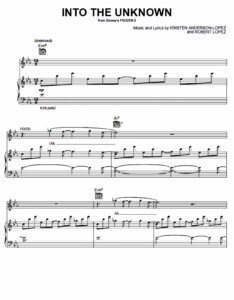 |
|
| AURORA It Happened Quiet Piano Solo arr. |
 |
|
| AURORA Runaway Piano Vocal guitar Chords |
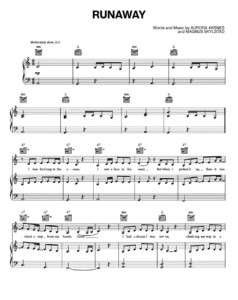 |
|
| AURORA Songbook Sheet Music Anthology Collection | AURORA Songbook Sheet Music Anthology Collection | |
| AURORA The River Aurora Piano Solo arr. |
 |
|
| Automatic Harmonic Analysis of Jazz Chord Progressions Using a Musical Categorial Grammar (Mark Wilding) | Automatic Harmonic | |
| Autour Du Jazz Guitar 4 pièces pour guitare (Thierry Tisserand) |
 |
Autour Du Jazz Guitar 4 pièces pour guitare (Thierry Tisserand) Contents — autour du jazz |
